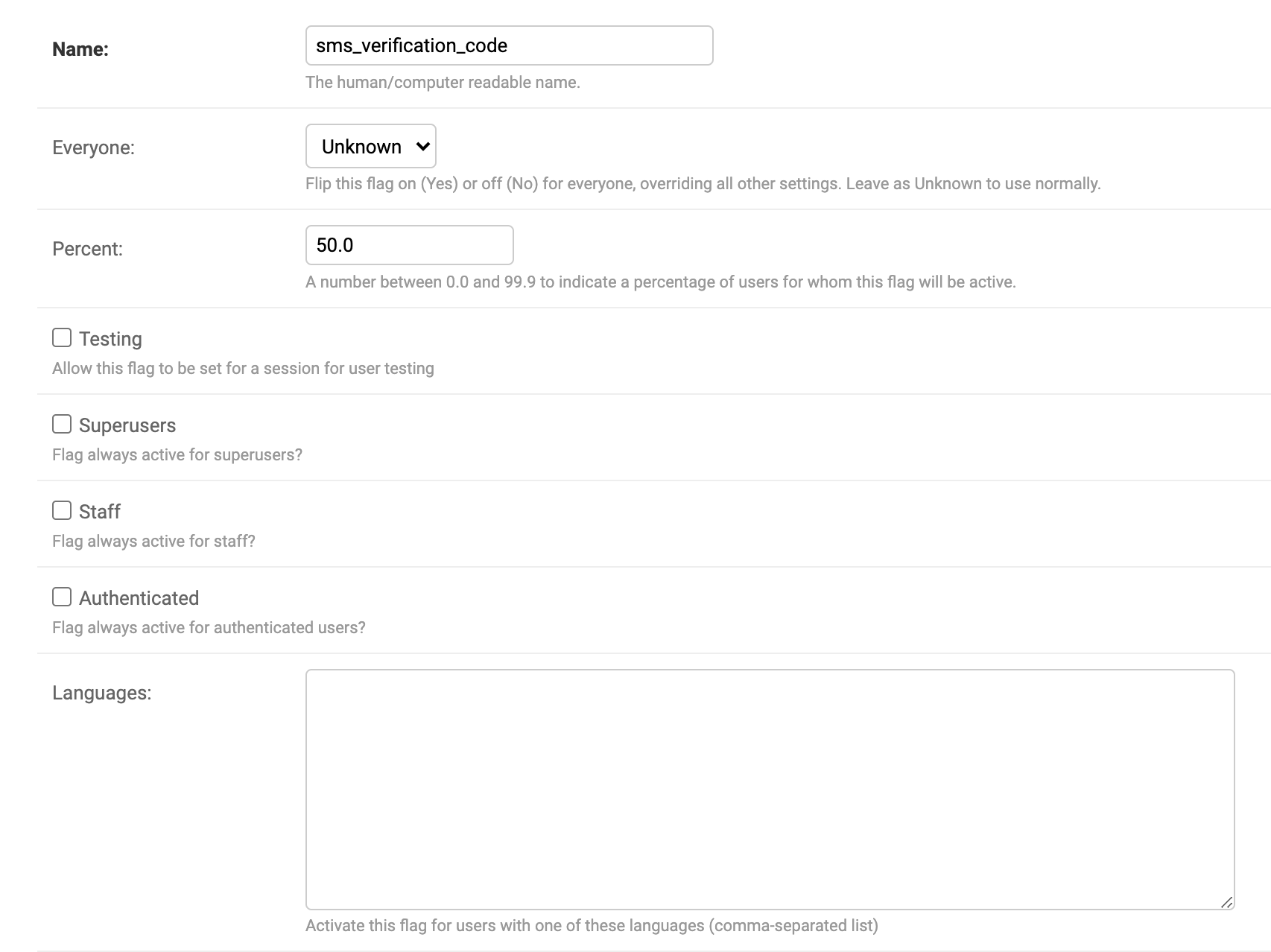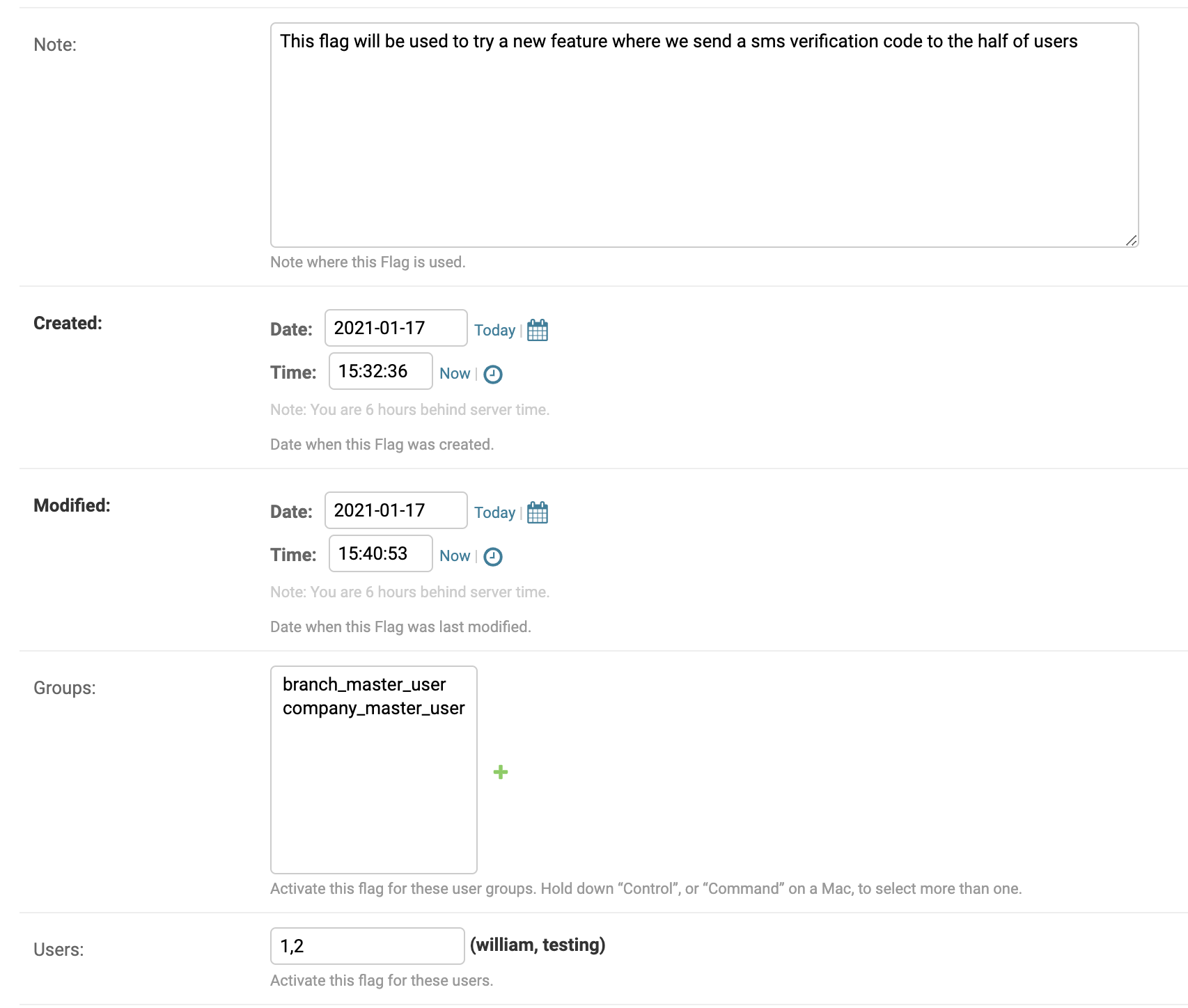Using feature flags with django waffle
What’s a feature flag?
In simple words a feature flag (feature toggle) is a mechanism to enable or disable a feature on a system without the need of changing environment variables or deploying a new version of the system
Common use cases of feature flags
Feature flags are used often on projects that follows a continuos integration approach, giving full control of rolling out new features to production. Also are used to experiment with variants of a feature (AB testing) for distinct segments of users
Feature flags in Django
If you are reading this post probably you already have a Django project where you want to start using features flags.
Recently I did a research of libraries to implement feature flags on django and I found a couple of options but I decided to use django-waffle because the setup it’s very simple and you can start creating flags immediatly
Set up of django waffle
pip install django-waffle
Then add the waffle configuration to your settings file
INSTALLED_APPS = (
# ...
'waffle',
# ...
)
MIDDLEWARE = (
# ...
'waffle.middleware.WaffleMiddleware',
# ...
)that’s almost what we need to start using waffle
Setting up a new flag
I will show you how to create a new flag with waffle using the django admin
if you have django admin enabled on your project, try opening it and you’ll see a new group on the admin main page called DJANGO-WAFFLE where you can find a link to Flags
 Now open the
Now open the Flags link and press the add flag button:
 After that you will see a form like this to create your first flag, in this example I will create a feature flag to send a sms verification to the half of users that are singing up to my site
After that you will see a form like this to create your first flag, in this example I will create a feature flag to send a sms verification to the half of users that are singing up to my site


Let me explain you the most important fields on this form:
- Name: the name that you will use to identify a feature flag, keep it descriptive and short
- Everyone: True if you want to apply this flag for all your users, False if you want to use a percent, Unknown if you want to choose specific users for this flag
- Percent: the percent of users that will be affected by this rule, in my case 50%
- Superusers: True if you want to apply this flag to all the superusers
- Staff: True if you want to apply this flag to all the staff members
- Authenticated: True if you want to apply this flag to authenticated users
- Notes: True if you want to apply this flag to authenticated users
- Groups: Select specific user groups to apply the flag
- Users: Select specific users to apply the apply
Identifying if a flag is active in views and templates
The last step is to apply distinct logics if a flag is enabled, to do that waffle give us some helpers to check if a flag is enabled, for example lets say that we have this view that currently is not sending a sms verification code on signup
def signup(request):
if request.method == 'POST':
form = UserCreationForm(request.POST)
if form.is_valid():
form.save()
username = form.cleaned_data.get('username')
raw_password = form.cleaned_data.get('password1')
user = authenticate(username=username, password=raw_password)
login(request, user)
return redirect('home')
else:
form = UserCreationForm()
return render(request, 'signup.html', {'form': form})Now lets apply the flag verification in views using flag_is_active helper function:
from waffle import flag_is_active
def signup(request):
send_verification_code_enabled = flag_is_active('sms_verification_code')
if request.method == 'POST':
form = UserCreationForm(request.POST)
if form.is_valid():
form.save()
username = form.cleaned_data.get('username')
raw_password = form.cleaned_data.get('password1')
if send_verification_code_enabled:
phone_number = form.cleaned_data.get('phone')
send_verification_code(phone_number)
return render(request, 'signup.html', {'form': form})
user = authenticate(username=username, password=raw_password)
login(request, user)
return redirect('home')
else:
form = UserCreationForm()
return render(request, 'signup.html', {'form': form})And finally we can check for a flag in a template using waffle_tags
{% load waffle_tags %}
{% flag "sms_verification_code" %}
<label for="verification_code">Verification code:</label>
<input type="text" name="verification_code">
{% else %}
<p>sms_verification_code not enabled</p>
{% endflag %}Check out the Django Waffle docs for more info on how to get the most out of Django Waffle.
Posts
subscribe via RSS